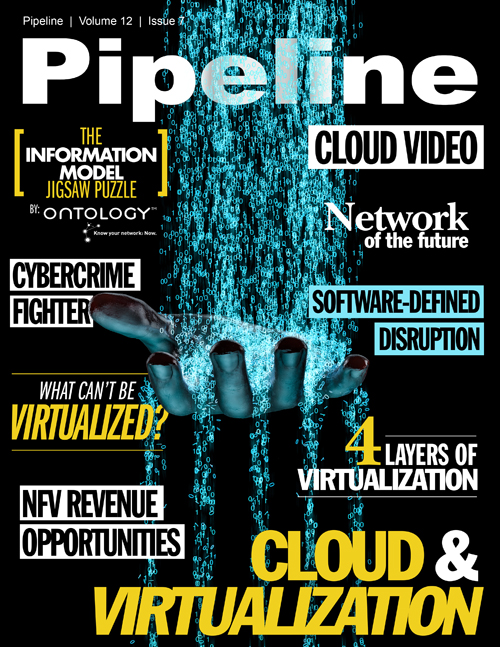The Four Layers of Virtualization
Clouds may be the future, but they are a devil to deploy
To begin, the service could expand beyond mobile phones security for PCs, smart TVs, IoT devices – in fact, any device that browses. So the service could compete with software from security firms
like Symantec and McAfee. A cable operator might offer a Clean High Speed Internet service that protects every device that accesses the service.And virtualization could also enable an ecosystem of security VNFs that deliver industry-specific security: one for banks, another for retail stores, and another for manufacturing.
Function Virtualization & Orchestration
Clouds may be the future, but they are a devil to deploy. By the time a large carrier writes the tender, negotiates the deal, and deploys a cloud service, it could easily take three
years.Enter Network Function Virtualization (NFV) -- an open standards way to orchestrate cloud services and bring them to market much quicker, cheaper, and more flexibly than was ever possible before.
Cloud networking provider Masergy is one of the first to deliver a global NFV solution for Fortune 500 enterprises. A new Masergy service deploys virtual VPN and firewall functions across Carrier Ethernet via customer premise servers. Masergy’s customers, at various sites around the globe, simply go to a portal, see how much a service costs, order it, and have it up and running locally right away.
Under the covers of the Masergy service is Overture Networks’ orchestration solution, which delivers a pure-play CE capability requiring no physical CE capability. The customer merely plugs his Ethernet cable into the back of the server.
And the advantage of pure-play orchestration? Well, according to Prayson Pate, Overture’s Chief Technology Officer, it delivers great flexibility in the choice of hardware: “You can buy a cheap server, a hardened server, a big or small server, and if your access point is a small city in Inner Mongolia, you can even source the server from the local market and avoid the hassle of import/expert certifications.”
Lifecycle Service Orchestration (LSO)
Certainly one of the biggest challenges of virtualization is figuring out how to bring these new components into the mainstream of telco operations.Telecoms still live in a swivel chair world. They have multiple systems, each with unique interface and commands. So there’s a big benefit in having an overarching framework that abstract the details of configuring and managing a particular VNF or physical network element through an NMS or EMS. That’s what Lifecycle Service Orchestration is all about. And the word “lifecycle” in LSO signals that it’s not just about provisioning services and functions; it’s also about assuring them.
In fact, Gregg Hara, VP of Marketing at Centina Systems, feels that the move to virtual services will require operators to step up to a better service assurance platform: “In a physical environment you can get away without having a true service view as long as you are monitoring the physical devices that make up the service. If you see a problem on the device, you can troubleshoot and work your way back. But assuring virtual services won’t be so easy. You need to be plugged into the cloud manager, the SDN controller, and all the other components the VNF relies on.”
Now interestingly, the end customer cares very little about how a virtual service is delivered: they just want the service. The biggest benefactor of virtualization is the telecom itself who gets a more flexibility way to launch new services quickly and at reduced cost. But the customer will squawk if the virtual service is less reliable that what the customer had in the physical world. This is why service assurance is so critical.Fortunately, advanced assurance solutions from Centina and others are paving the way with plug-in adapters and better analytics techniques to stay ahead of the far greater complexity virtualization brings.
Another firm, Cenx, uses Google-search-like analytics to drive its LSO product. Explains Ed Ogonek, Cenx’s CEO and President: “We take in data from dozens of switches, routers, and OSS sources like inventory, fault, and provisioning systems. From there we populate a real-time searchable database that gives us a far more efficient way of isolating faults and troubleshooting, whether it’s an Ethernet service for mobile backhaul or an IP-VPN private line.”Another benefit of these new LSO products is better visualization. For instance, the user can start with a Google map and drill down to a particular service and see all the segments that make up the service. If it’s 10 different segments, you can drill down on each one of them and see the performance, latency, and fault data for all the equipment servicing, say, a microwave link or a router in a VPN.



















